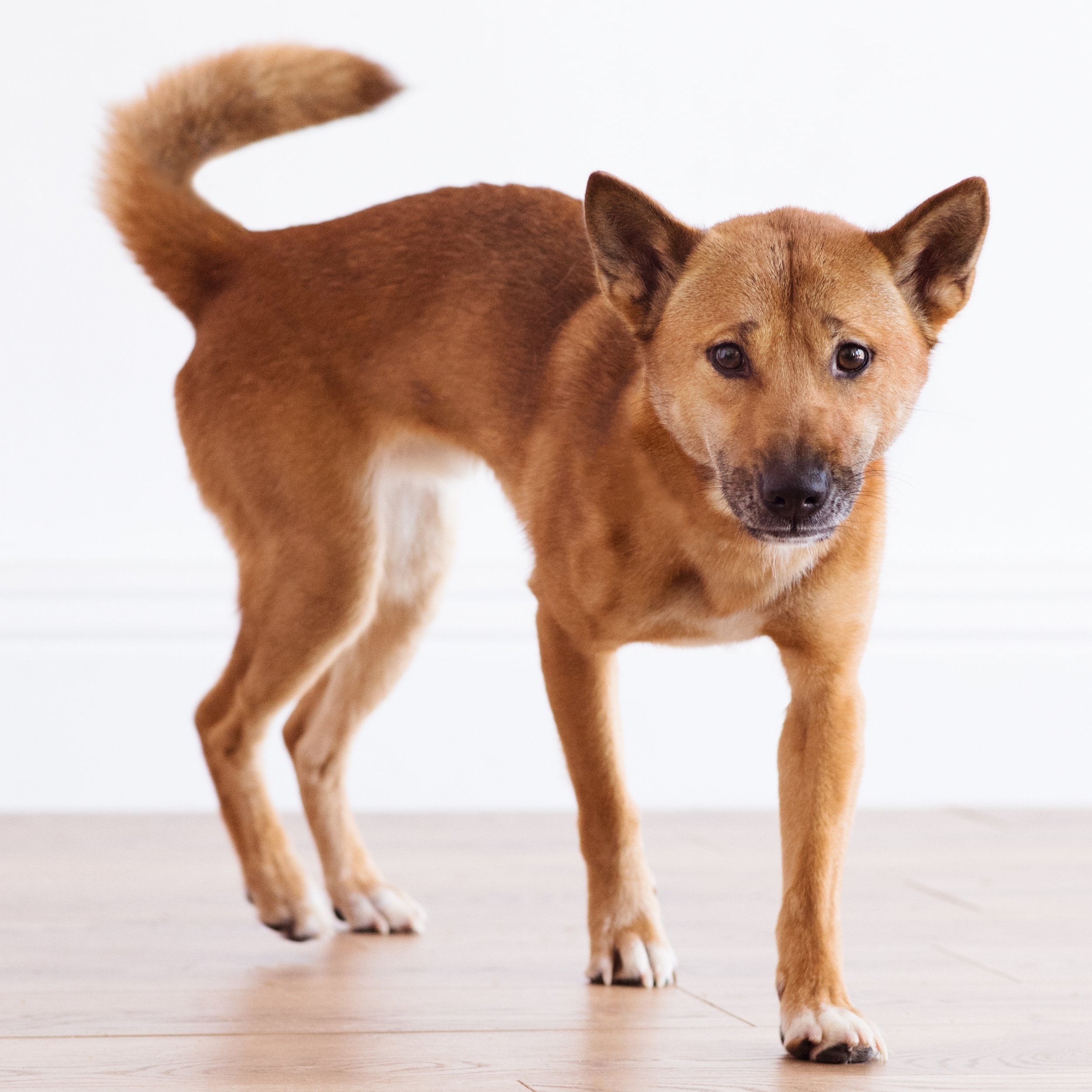New Guinea Singing Dogs
Nicky, Stumpy, Akili, Zeebee, and C as puppies!
Previously considered a species in its own right, the New Guinea Singing Dog (also sometimes called a New Guinea Highland Dog, a NGSD, or just a Singer) is now believed to come from an ancient lineage of dogs, much like its Australian relative, the Dingo.
NGSDs are sometimes called "living fossils" because they closely resemble how dogs are believed to have looked and behaved 10,000 years ago. It is thought that at some point during the Stone Age, people brought their domesticated dogs with them from Asia as they migrated into Australia and New Guinea. Once these dogs made their way to New Guinea, they created a wild population of animals. After this, the sea levels started to rise due to the warming after the Ice Age, and New Guinea became the island we know today. The New Guinea Singing Dogs were now separated from any other population of dogs and were left to evolve due to purely natural means.
In the 1950s, these animals were rediscovered, and the first of these dogs were brought out of New Guinea. Since then, there have been efforts to conserve this unique animal. It is estimated that only 200-300 of these animals are in existence today, and we are fortunate that 3 of them are here with us at JABCECC.
Click the video to hear Luxx sing!
These dogs are barkless, but as their name indicates, they love to sing in a haunting, yodel-like howl. Unlike a domestic dog, NGSDs have incredibly flexible spines and limbs—so much so that they can actually climb some types of trees like a cat! They have almond-shaped eyes with excellent night vision and bushy tails (with the exception of our boy Stumpy).
Luxx
Sweet mama Luxx was born at a zoo in Canada. Since NGSDs come from a tropical climate, the cold Canadian winters were unkind to her, so a zoo staff member took her home to raise her in a better environment. However, NGSDs aren’t quite domestic dogs either, so Luxx got up to some mischief… She broke out of the home, ran into a convenience store, and ate a whole rack of hot dogs! After that breakout, she was sent back to the zoo, but rescued by JABCECC shortly afterwards to bring her into a warmer climate and watchful care.
To help preserve the NGSD lineage and continue our conservation and education efforts, she was bred with another NGSD and gave birth to a conservation litter of 5 healthy pups in 2017. Two of those pups (Nicky and Stumpy) stayed with us at JABCECC to help further our mission. The other 3 Singers from the litter (Akili, Zeebee, and C) were placed with experienced NGSD caretakers.
Luxx is in need of a sponsor!
Nicky Rambo
Nicky was the firstborn of our NGSD conservation litter in 2017. Calm, cool, and confident, Nicky is an excellent ambassador for Singers. Within just a few minutes of meeting him, you’re likely to see some unique NGSD behavior, including a sassy head toss. Though Nicky gets excited to meet new people, he only likes it on his specific terms: He wants you to stand still, look straight ahead, and let him lick your face.
Nicky is in need of a sponsor!
Stumpy Doo
Sweet Stumpy Doo is all “love and butterflies”. He was born #2 of the same conservation litter as his brother Nicky Rambo, and as a kind soul, he often looks concerned about his big brother’s antics. He’s less choosy than Nicky and will happy give lots of love, both in encounters and at our events.
Stumpy’s name comes from his stumpy tail, which he was born with. This is a genetic defect that can sometimes happen when there is not much diversity left in the gene pool. Because there is only a tiny population of NGSDs in the wild and an even smaller captive population, unfortunately it has become common for NGSDs to have tails that are either abnormally short or have a kink. Nonetheless, he will happily wag his stump to get to meet you!
Conservation Efforts Underway at the JABCECC
Dawn of the Dog: The Genesis of a Natural Species by Janice Koler-Matznick
At the JABCECC, we are pleased to be part of the efforts to save the New Guinea Singing Dog. We are currently participating in a program to better understand the genetic diversity that exists in the captive bred population through newly available genetic testing via EmbarkVet and collaboration with geneticists and NGSD enthusiasts. This pilot study will allow us to determine the extent of the current genetic diversity in order to develop a larger program aimed at maintaining this diversity through a specialized breeding program.
References:
Photographs of the World’s Rarest Dog Sparks a Quest to Save the Species
New Guinea Singing Dog Conservation Society
First photo of rare, wild New Guinea singing dogs in 23 years
Expedition to Find the New Guinea Singing Dog: The Rarest Dog in the World
Genetic structure in village dogs reveals a Central Asian domestication origin






